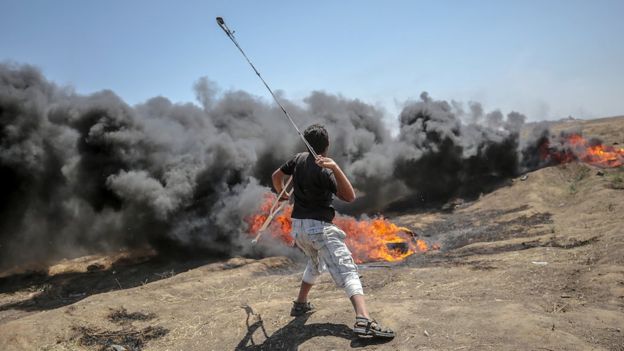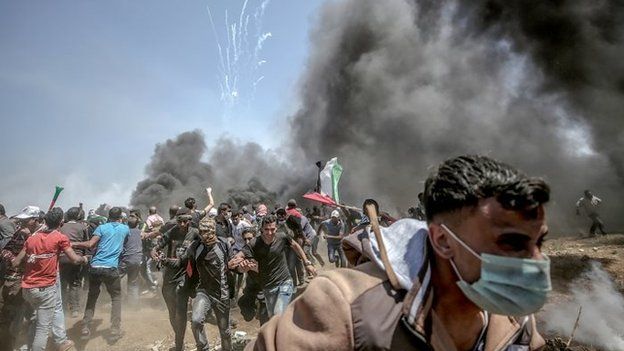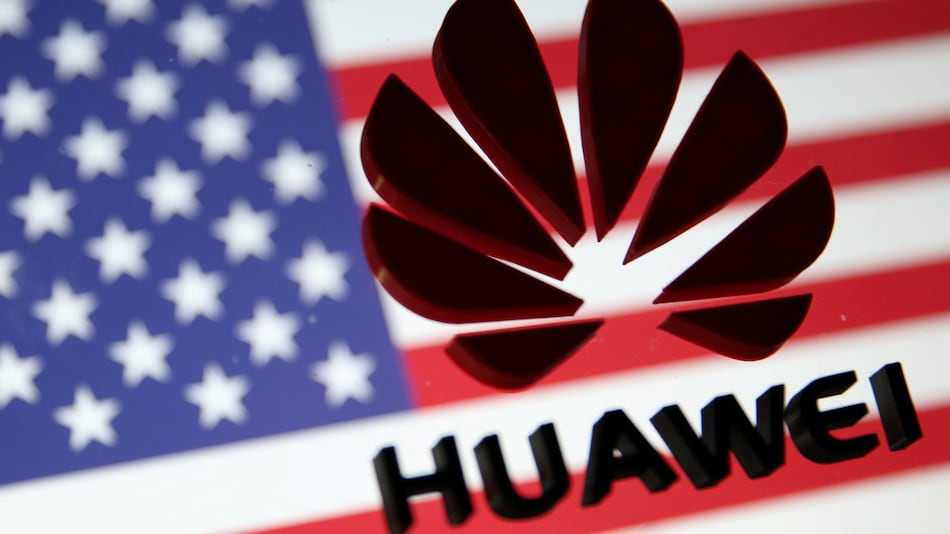
Funerals are being held in Gaza after the deadliest day of violence there since a war in 2014.
On Monday, 58 people were killed when Israeli troops opened fire during Palestinian protests.
Tuesday is the 70th anniversary of what Palestinians call the Nakba – a mass displacement after Israel’s creation.
Israel’s military said it was preparing for further confrontations on Tuesday ,but Palestinian groups indicated they intended to rein in the protests.
Monday’s violence came as the US inaugurated its first embassy in Jerusalem, a controversial move that broke with decades of US policy and incensed Palestinians.
Palestinians claim East Jerusalem as the capital of a future Palestinian state. Many see the US move as backing Israeli control over the whole of the city, which Israel regards as its indivisible capital.
- Palestinian Nakba explained in 100 and 300 words
- Analysis: The real reasons behind Trump’s embassy relocation
- Gaza’s deadly day in pictures
Palestinian officials said that as well as those killed, about 2,700 people had been injured in what they called a massacre.
Israeli Prime Minister Benjamin Netanyahu said his military was acting in self-defence against Gaza’s Islamist rulers, Hamas, who seek to destroy Israel.
Israel’s military said it had only fired at “targets of terrorist activity”.
The UN human rights office was heavily critical of Israel’s use of force.
“The mere fact of approaching a fence is not a lethal, life-threatening act, so that does not warrant being shot,” spokesman Rupert Colville told reporters in Geneva.
“How much threat can a double amputee be making from the other side of a large fortified fence?” he asked – referring to a widely shared report that a wheelchair user was killed during the violence.
What happened at the Gaza border?
Israel said some 40,000 Palestinians had taken part in “violent riots” at 13 locations along Israel’s security fence on Gaza’s eastern border on Monday.
Palestinians hurled stones and incendiary devices and approached the border fence. Israeli snipers fired live ammunition at protesters and used tear gas dispersed from drones.
Palestinians were demonstrating as they have been for seven weeks, as part of a protest branded the “Great March of Return”.
Monday’s protests were timed to mark the anniversary of Israel’s creation in 1948 and the hundreds of thousands of Palestinians who subsequently fled their homes or were displaced in the war that followed.
 Image copyrightEPA
Image copyrightEPA- Monday’s events as they happened
- What makes Jerusalem so holy?
- What is Hamas?
Mr Netanyahu blamed Hamas for the violence and sought to justify Israel’s military action. “Every country has an obligation to defend its borders,” he said,
Hamas did not initiate the weekly protests that have been taking place for the past seven weeks, but the group has since become the driving force behind them.
At Shifa, Gaza’s main hospital, men were queuing on Tuesday to give blood. They wanted to help the many wounded in Monday’s violence.
Inside the hospital, there were many with gunshot wounds. Across Gaza, families were burying their dead. By midday there were no reports of new demonstrations.
There was shock in Gaza at the scale of the killing. The right of return to lands they lost is a highly emotional issue for Palestinians but people here questioned whether it was worth staging such a protest after the terrible death toll.
In fact, this was an incident waiting to happen. Tension has been rising for weeks in Gaza. People here have been impoverished by a goods blockade imposed by Israel and by Egypt, which shuns Hamas because of its links with the Muslim Brotherhood.
The only way of stopping more violence and death is to work seriously to settle the conflict. But that is not happening.
How did the world react?
Israel’s actions were widely condemned, but it was defended by its key ally, the US.
- White House spokesman Raj Shah said: “The responsibility for these tragic deaths rests squarely with Hamas” and the US also blocked a UN Security Council statement calling for an independent inquiry
- The UK, Germany, and France expressed concern about the lethal response by Israeli forces
- Russia said it was watching closely, adding that the Palestinian death toll could not “but provoke the deepest concern”
- Turkey said the US shared responsibility with Israel for a “vile massacre” and recalled its ambassadors from both countries
- South Africa also recalled its ambassador from Israel

What is the Gaza Strip?
The Gaza Strip is a narrow piece of land between Israel and Egypt, home to about 1.8 million Palestinians and very densely populated.
Its shape was defined by ceasefire lines with Egypt at the end of the 1948-9 Arab-Israeli war.
Egypt administered Gaza for the next 19 years until Israel occupied it in the 1967 Arab-Israel war.
Israel withdrew its forces and settlers in 2005, but the UN still considers the territory occupied.
- Life in the Gaza Strip
- Gaza’s deadly day in pictures
Since 2007, Israel and Egypt have enforced a sea and air blockade, controlling the flow of commercial goods and people in and out of the impoverished strip.
They say it is for their own security.
Politically, Gaza is controlled by Hamas, which Israel and other powers regard as a terrorist group.
In 2014, a 50-day war between Israel and militants in Gaza killed 2,251 Palestinians, including 1,462 civilians. On the Israeli side, 67 soldiers and six civilians died.
Why is the embassy controversial?
The violence in Gaza and the US embassy opening were not explicitly linked but both were timed to coincide with Israel’s 70th anniversary on Monday.
Commentators drew attention to the stark contrast between the images from Jerusalem – of a high-level US delegation, alongside Mr Netanyahu and his wife, celebrating the new US embassy opening – and the violent images emerging from Gaza.
The relocation has incensed the Palestinians and drawn the ire of other nations, who say it violates international law.
The Palestinian president, Mahmoud Abbas, called the new embassy “a US settlement in East Jerusalem”.
Source:-bbc.c



